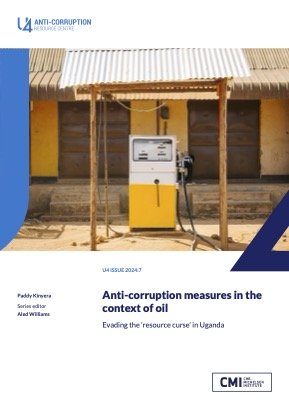By András Kádár
The report, authored by András Kádár and coordinated by MPG, for the European network of legal experts in gender equality and non-discrimination, reveals widespread anti-Muslim discrimination and bias, highlighting critical gaps in legal protections and enforcement. Despite existing frameworks, many Muslims and individuals perceived to be Muslim face systemic barriers and societal prejudice across key areas of life.
Key findings include:
Employment: Nearly one-third of Muslim respondents reported experiencing discrimination during their job search.
Harassment: One in four faced harassment linked to their ethnic or immigrant background.
Access to Housing and Healthcare: Half of the respondents encountered discrimination based on their names, skin colour, or physical appearance.
The report also highlights a surge in anti-Muslim hate following the October 2023 attacks, with entire communities targeted by harmful stereotypes and divisive rhetoric. Structural challenges, such as underreporting and the normalisation of bias in public discourse, further hinder progress.
The report calls on policymakers and institutions to:
Address enforcement gaps in anti-discrimination laws.
Provide robust support mechanisms for victims of discrimination.
Challenge anti-Muslim rhetoric at every level of society.
This report reinforces MPG’s commitment to advancing evidence-based strategies for equality and inclusion.
The time to act is now. Together, we can build societies where diversity is celebrated, and everyone is treated with dignity and respect.
As the European Union’s anti-racism action plan for 2020-20251 (EU anti-racism action plan) emphasises, ‘[r]acism damages society in many different ways. Most directly, it means that a large number of people living in Europe face discrimination, affecting their human dignity, their life opportunities, their prosperity and their well-being, and often also their personal safety.’2 This predicament described by the action plan is the everyday reality of many Muslims and persons perceived to be Muslims across Europe. The persistence of anti-Muslim sentiment in a number of European societies and the widespread discrimination against members of the Muslim community are strongly substantiated by sociological research. Nearly one-third of the Muslim respondents to the second European Union minorities and discrimination survey (EU-MIDIS II survey) carried out by the European Union Agency for Fundamental Rights (FRA) in 2017 indicated that they had suffered discrimination when looking for a job; one in four Muslim respondents reported harassment due to their ethnic or immigrant background, while their names, skin colour or physical appearance prompted discrimination against about half of the respondents when they were looking for housing or a job, or were receiving healthcare.3 The FRA’s 2019 fundamental rights survey showed that 32 % of the more than 28 000 respondents would feel uncomfortable about having a neighbour who is Muslim; 41 % would not feel comfortable with a family member of theirs marrying a Muslim person; and 31 % were of the view that it would be acceptable for a shop not to hire a Muslim woman who wears a headscarf because of concerns about how some customers might react.4 The 2023 Eurobarometer survey on discrimination in the European Union5 also confirmed the existence of antiMuslim bias, although it was conducted before the attack of 7 October 2023, which has resulted in a surge of anti-Muslim hate speech on the internet, and intensified racism, intolerance and discrimination against Muslim people in several European countries. As the 2023 annual report of the European Commission against Racism and Intolerance (ECRI) concludes: ‘the number of hate incidents against Muslims […] increased manifold in the aftermath of the attack. Muslims received blame for the attack and other attacks in the Middle East, based on stereotyping of whole communities and their perceived connections with the use of violence.’6 Similar trends have been reported for the purposes of the present study in countries including Austria, Belgium, Croatia, Denmark, France, Germany, the Netherlands, Lithuania, Luxembourg, Slovenia and Sweden. In this situation, joint European efforts to combat anti-Muslim hate are gaining increased importance. The European Union has not only adopted policies and commitments with a view to combating racial and/or religious hatred, including anti-Muslim hate, but has also put in place numerous legal instruments that can be used to counter different manifestations of anti-Muslim bias, including but not limited to the Framework Decision on combating certain forms of expressions of racism and xenophobia,7 the Racial Equality Directive,8 the Employment Equality Directive,9 the Victims’ Rights Directive,10 the Audiovisual Media Services Directive,11 and the Digital Services Act.12 In the EU anti-racism action plan, the European Commission encourages the Member States to ensure that they fully transpose and properly apply these pieces of EU law designed to provide protection against racism. In line with this call, this thematic report provides a comparative overview of how these legal instruments have been complied with in the 27 EU Member States, and aims to establish how and to what extent the legal framework and its practical application in the different Member States provide protection against anti-Muslim hate in three main areas: (i) non-discrimination; (i) hate crimes; and (iii) hate speech. It identifies gaps in the existing legal protections and/or their enforcement across the EU Member States and makes recommendations on mechanisms for the provision of effective protection against acts motivated by anti-Muslim hate. Important trends in anti-Muslim hate The research conducted for the purposes of this report has identified some overarching and strongly interlinked trends in anti-Muslim hate across Europe: the ‘racialisation’ of Muslims; the structural nature of anti-Muslim discrimination; the appearance of anti-Muslim hate in the political mainstream; and the enormous degree of underreporting of anti-Muslim incidents. As described in ECRI’s General Policy Recommendation No. 5 on preventing and combating anti-Muslim racism and discrimination, anti-Muslim discrimination is structural, because it ‘does not solely manifest in instances of interpersonal hostility or discrimination’, but ‘is woven into the ways our societies function, and operates through norms, routines, patterns of attitudes and behaviour that create obstacles in achieving […] effective equality’. The document also points to the ‘racialisation’ of Muslims, i.e. the process by which certain groups of society (identified by, for example, phenotype or cultural identifiers) are ascribed ‘certain […] attributes that are presented as being innate to all members’ of that group. ‘[O]nce identified or perceived as a member of a group, one is deemed as embodying characteristics based on, for instance, skin colour, ethnic or national origin or religion inherent to all members of that group. This process is […] turning a diverse set of people into an allegedly homogeneous group, whose members are presented as “Other”.’13 The main challenges in tackling anti-Muslim hatred are strongly linked to these two specific, and also interconnected, phenomena: the racialisation of Muslims paves the way to falsely presenting and stigmatising them as a homogeneous, monolithic block posing threats to European values and security, which greatly contributes to the success of populist political forces using fear, anger and anxiety as key elements of their strategy to enter the political mainstream. It also reinforces the structural nature of anti-Muslim discrimination, which in turn has a devastating impact on, among others, Muslim communities’ trust in the legal and institutional system that should be protecting them, leading almost directly to the unsettling extent of underreporting of instances of anti-Muslim hate and discrimination.
Brussels: EUROPEAN COMMISSION , 2024. 156p.





















